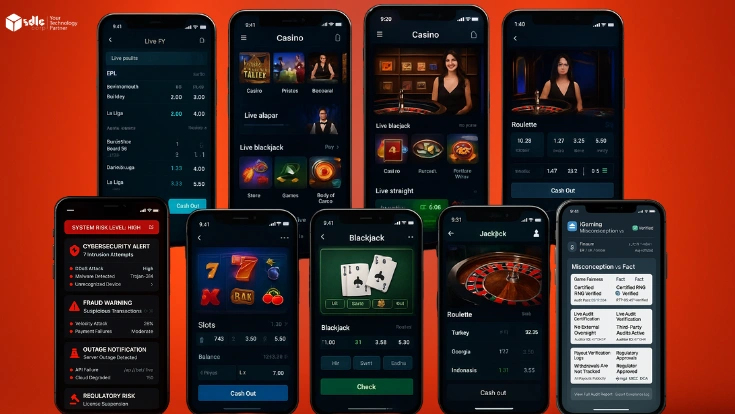Introduction
Fantasy game narratives have become increasingly sophisticated, offering players the opportunity to dive into vast, immersive worlds filled with complex characters and intricate plots. However, game developers, especially those working with a game development company, face a challenging task: balancing open-world exploration with the demands of a linear storyline. This balance is crucial in ensuring that players feel both free to explore and immersed in a structured, cohesive narrative. In this article, we’ll explore how fantasy games strike this balance, analyse the benefits and drawbacks of both approaches, and highlight some of the best examples in the genre.
Boost Your Fantasy Game Efficiency

Fantasy Game Narratives
Fantasy games are known for their rich storytelling, which often involves epic quests, magical realms, and larger-than-life characters. At the core of these games is the narrative, which drives the player’s journey through the game world. Whether it’s an independent developer or a game development agency working on these titles, the focus on narrative can make the difference between a game that is merely enjoyable and one that leaves a lasting impact.
The challenge arises when developers seek to combine the freedom of open-world exploration with a linear, cohesive storyline. Players enjoy the ability to roam freely, discovering hidden locations and completing side quests at their own pace. However, a purely open-world experience can sometimes lead to a loss of narrative focus, causing the story to feel fragmented or less impactful. On the other hand, a strictly linear narrative may limit the player’s sense of agency and exploration, making the game feel more restrictive.
The Appeal of Open-World Exploration
Open-world games have gained immense popularity over the years, and for good reason. They offer players a sense of freedom and immersion that is difficult to achieve in more linear experiences. Many game development services aim to provide that open-world flexibility to give players vast landscapes to explore and hidden secrets to uncover.
Benefits of Open-World Exploration
- Player Agency: Open-world games give players a sense of control over their experience. They can choose when and where to explore, allowing for a more personalized experience.
- Immersion: The ability to explore a world at one’s own pace enhances immersion. Players can become fully absorbed in the game world, discovering new environments and stories organically.
- Replayability: Open-world games often have a higher replay value, as players may miss certain areas or quests during their first playthrough. This encourages multiple playthroughs, each with different experiences.
- Dynamic Storytelling: In an open-world setting, the narrative can evolve based on player choices. For example, completing a side quest may unlock new storylines or alter the main plot’s outcome.
Drawbacks of Open-World Exploration
- Lack of Narrative Focus: One of the primary challenges with open-world games is that the main storyline can sometimes take a backseat. Players may become distracted by side quests, causing the pacing of the story to suffer.
- Fragmented Storytelling: In open-world games, the story can feel disjointed if the player tackles different parts of the narrative out of order. This can result in a loss of emotional impact and coherence.
- Overwhelming Scope: Open-world games can be overwhelming for some players. The sheer number of quests, locations, and activities can make it difficult to stay focused on the main story.

The Strength of Linear Storylines
Linear storylines, on the other hand, offer a more structured experience. In a linear game, the player follows a predetermined path, with little to no deviation from the main story. This allows for a tightly crafted narrative with a clear beginning, middle, and end.
Benefits of Linear Storylines
- Narrative Focus: Linear storylines allow for a more focused narrative experience. Players are guided through the story, ensuring that they experience key plot points in the intended order.
- Emotional Impact: A linear narrative can create more emotional depth, as the pacing and structure are carefully designed to build tension and deliver impactful moments at the right time.
- Cohesive Storytelling: In a linear game, the story is told in a clear and coherent manner. There is no risk of players missing important plot points or encountering story elements out of order.
- Character Development: Linear games often feature more developed characters, as the story is tightly woven around their arcs. Players can experience character growth and relationships in a more meaningful way.
Drawbacks of Linear Storylines
- Limited Exploration: The primary drawback of linear storylines is the lack of freedom. Players are often confined to a specific path, which can feel restrictive for those who enjoy exploration.
- Repetitive Playthroughs: Linear games may have less replayability, as the story unfolds in the same way each time. Once players have experienced the plot, there may be little incentive to replay the game.
- Reduced Player Agency: In a linear game, players have less control over the story. Their actions may have little impact on the overall narrative, leading to a sense of disconnection from the game world.
Jump Into Action: Start Fantasy Game Project

Balancing Open-World Exploration with Linear Storylines
The key to creating a compelling fantasy game lies in finding the right balance between open-world exploration and a linear storyline. Many successful fantasy games have managed to combine the best elements of both approaches, offering players freedom while still delivering a strong, cohesive narrative.
Narrative Anchors in Open-World Games
One effective method of balancing these elements is through the use of narrative anchors. These are key story events or moments that are central to the game’s plot. While players are free to explore the world at their own pace, they are periodically drawn back to these anchors, which help to maintain the narrative’s focus.
For example, in The Witcher 3: Wild Hunt, players can explore a vast open world filled with side quests and hidden stories. However, the main plot remains central, with key moments driving the story forward. This ensures that while players have the freedom to explore, they are always aware of the main narrative thread.
Dynamic Storytelling Through Player Choice
Another approach is dynamic storytelling, where the player’s choices impact the direction of the story. This method allows for a more open-world experience while still maintaining a cohesive narrative. Games like Dragon Age: Inquisition and Mass Effect use this approach, allowing players to make decisions that shape the story’s outcome.
Dynamic storytelling not only enhances player agency but also adds replayability, as different choices can lead to different narrative paths. This balance ensures that while players have control over their journey, the story remains engaging and impactful.
Structured Exploration
In some games, developers use structured exploration to guide players through the world without making it feel overly linear. This involves creating zones or areas that unlock as the story progresses. Horizon Zero Dawn is a prime example of this approach. While the game features an open world, certain areas are inaccessible until specific story events occur. This method ensures that players experience the narrative in a relatively structured manner while still enjoying the freedom to explore.

Case Studies: Successful Balances of Open-World and Linear Narratives
Several fantasy games have struck the perfect balance between open-world exploration and linear storylines, offering players the best of both worlds. Let’s take a look at some of these examples:
1. The Elder Scrolls V: Skyrim
Skyrim is one of the most iconic open-world fantasy games, known for its vast landscapes and endless opportunities for exploration. While the game offers a wealth of side quests and activities, the main storyline remains a central focus. Players are free to explore the world at their own pace, but the narrative anchors, such as the Dragonborn prophecy, keep the story moving forward.
2. The Witcher 3: Wild Hunt
The Witcher 3 is another excellent example of a game that balances open-world exploration with a linear storyline. The game’s main plot, which follows Geralt’s quest to find Ciri, is tightly woven into the open-world experience. Players can explore the world, complete side quests, and engage with NPCs, but the main story remains at the heart of the experience.
3. Red Dead Redemption 2
Although not a traditional fantasy game, Red Dead Redemption 2 offers a masterclass in balancing open-world exploration with linear storytelling. The game’s narrative is deeply emotional and character-driven, yet players are free to explore the world, engage in side activities, and shape their own experiences. The main story remains compelling, with key narrative moments anchoring the player’s journey.

Conclusion
Balancing open-world exploration with linear storylines is no easy task, but it is essential for creating a compelling fantasy game narrative. By using narrative anchors, dynamic storytelling, and structured exploration, developers from a fantasy cricket game development company or a fantasy football app development company can offer players the freedom to explore while still delivering a cohesive and impactful story. As games continue to evolve, the future of fantasy game narratives will likely involve even more innovative approaches to balancing these two elements, ensuring that players remain engaged, immersed, and emotionally invested in their adventures.
For companies offering fantasy cricket game development services or fantasy baseball app development services, understanding this balance is key to creating games that are not only enjoyable but also deeply immersive. Moreover, if you’re looking to create the next big fantasy game, it may be time to hire game developers who specialise in crafting these intricate narratives.

















